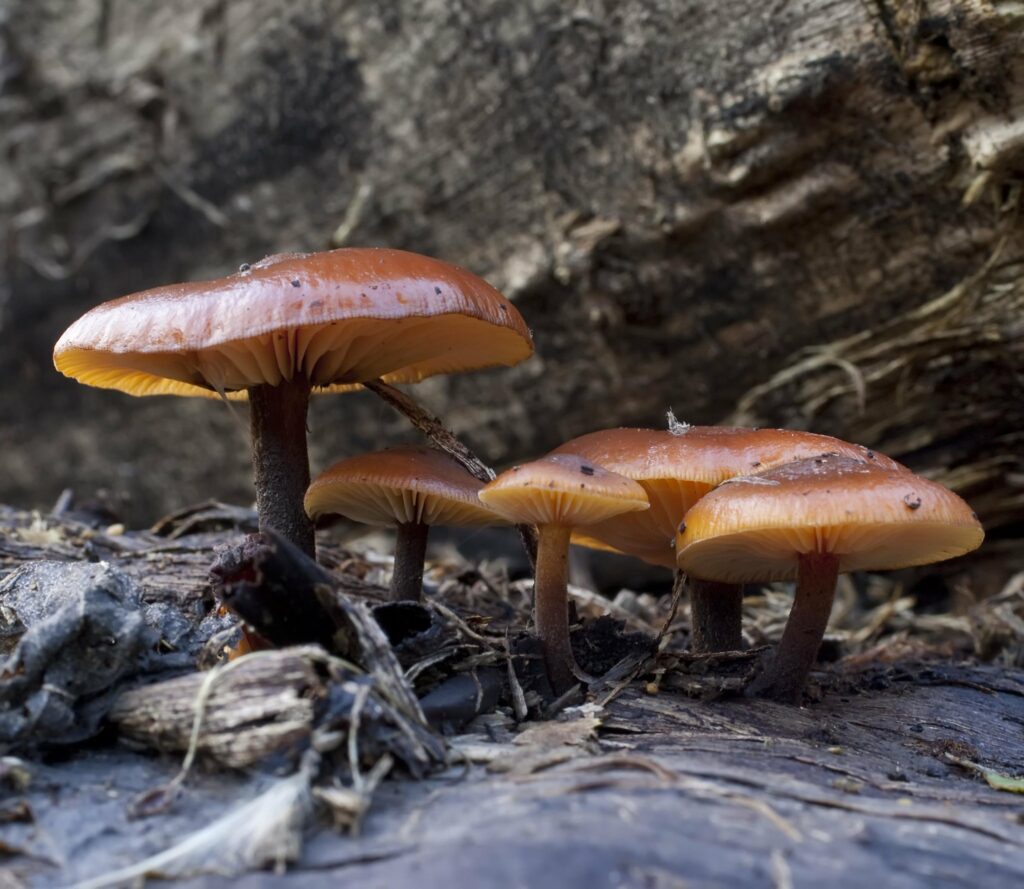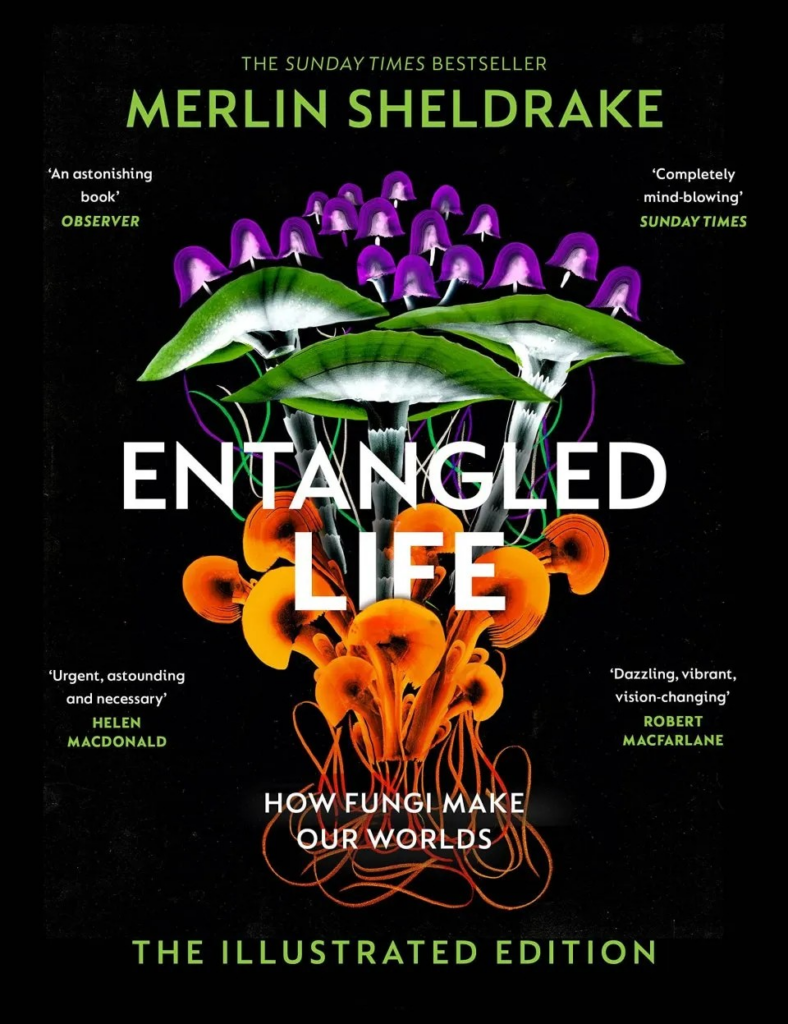For many people, the mention of mushrooms conjures up images of stroganoff, druids, or damp housing. However, for those of us who are mycologically inclined, a vast kingdom of species, ecological interactions, and secondary metabolites awaits to boggle the mind. Fungi are everywhere, circulating through the air as spores, forming networks below our feet, and even influencing popular culture. But what is mycology?

The History of Mycology
Originating from the Greek language, mycology translates to the study of fungus. The term was first coined in the early 19th century, but the study of fungi goes much further back. The Greeks pioneered written fungal observations, initially through records of poisonings. They were also the first to attempt to classify mushrooms (fungi), albeit as plants with missing parts, a narrative that persisted until the late 1960s when the fungal kingdom was first described.
Since the Greeks, theories about fungi origins ebbed and flowed throughout written history. From a modern taxonomic standpoint, Linnaeus (the father of modern taxonomy who formalised binomial nomenclature) and his contemporaries were integral to mycology, describing groups (genera) that still exist today, such as Boletus and Agaricus – though these have been heavily adapted from the original classifications. However, at this time, mushrooms were still classified as plants within the subcategory of ‘Cryptogamia’, due to the lack of apparent sexual organs, a similar grouping to that of the Greeks. But is mycology solely concerned with mushrooms, colloquially known as toadstools, the enigmatic, ephemeral fruits of fungal species?
The short answer is no. Once thought to be asexual plants, mushrooms are actually the reproductive structures of fungal species that form networks of organic strands called hyphae, collectively known as mycelium. When two sexually compatible hyphal strands from the same species meet, they twist and writhe, forming a knot. It is from this mycelial joint enterprise that the mushroom fruits, hence the term ‘fruiting bodies’.

Fungal Groups
Boletus and Agaricus are prime examples of iconic toadstool-forming fungal genera. Once fully developed, the toadstool drops spores, either from pores (in the case of Boletus) or gills (as with Agaricus). These genera are members of Basidiomycota (the spore-droppers) that release spores to fall to the ground. The other major fungal group, Ascomycota, the spore-shooters, fire spores from specially adapted tissue into the wind. Fungi classified as Basidiomycetes do not exclusively form toadstools, there is a large variety of fruitbody formations, each with unique identifying features and characteristics. Examples include brackets, puffballs, earthstars, stinkhorns, corals, toothed fungi, jellies, rusts, and smuts.
Ascomycetes, the spore-shooters, exhibit a similarly large variety of fruit body forms. Many ascomycete fruit bodies are considered cup fungi, such as the morel – a forager’s favourite. Cup fungi belong to the Pezizomycetes. This subgroup also contains truffles, which are prized by chefs, foodies, and mammals of various sizes. Other intriguing forms include saddle-shaped fungi, earth tongues, and club- and finger-shaped fungi.
Ascomycete fungi are known for their propensity for parasitism and pathogenicity, such as the ever-fascinating Cordyceps (zombie ant fungus), made famous by The Last of Us, or Ergot (Claviceps Purpurea), a plant pathogen. Ergot is hallucinogenic when consumed by mammals and most famously caused a ‘dancing plague’ among villagers in the early 20th century. Some fungi do not produce hyphae and therefore do not form mycelial networks or fruit bodies. A famous example of an Ascomycete fungus that doesn’t produce spores, mushrooms, or mycelium is yeast (Saccharomyces). Yeast is unicellular and present in the air and has had a dramatic impact on human societies via bread and beer, a winning combination.

Lichens
Lichens represent a fascinating intersection of biology, ecology, and mycology. These composite organisms are the result of a symbiotic partnership between a primary photo-biont, typically algae or cyanobacteria, and a fungal host. The photo-biont contributes photosynthetic sugars, while the fungus creates a stable environment for the photo-biont to thrive. This mutualistic relationship is an ingenious ecological strategy that allows both partners to survive in diverse and often extreme environments. Interestingly, as mycologists delve deeper into lichen biology, more complex partnerships are being discovered. Notably, 98% of the fungi associated with lichens belong to the ascomycetes, the group of spore-shooting fungi, and almost half of all ascomycetes participate in lichen formation.

Slime Moulds
Let’s touch on slime moulds, another group commonly mistaken for fungi. These soil-dwelling amoeba, originally described as ‘fast-growing fungus’, were integrated into fungal evolutionary history until the 1970s. Slime moulds share similarities with fungi in their lifecycles and ecological niches, but despite their name and popular belief, they belong to a different kingdom altogether – the protozoan kingdom. It’s easy to see why they were once considered members of the fungal kingdom, as they ‘fruit’ under similar conditions and are often found on rotten substrates in damp forests.

The often-overlooked fungal kingdom has been a key component to the development of life on earth and is often cited as one of the drivers for terrestrial evolution. Alongside its significance in evolutionary history, this unique kingdom has also benefitted humans for millennia and is expected to play a vital role in future healthcare, farming and food security. In addition to these significant contributions to civilisation, fungi are a delight to stumble across in the wild and are an object of beauty and wonder for many. Whether you are a seasoned mycologist, budding enthusiast or a complete beginner, fungi are bound to captivate you with their peculiarities – so why not head out this autumn, explore the forest floor, and see what you can find?
Below we have listed some recommendations for popular field guides and recent titles suitable for mycologists, as well as the NHBS Beginners Field Mycology Kit:
 Entangled Life (The Illustrated Edition)
Entangled Life (The Illustrated Edition)
This astonishing bestseller is now available in a beautifully illustrated gift edition and features over 100 spectacular full colour images
This extensive guide covers the fungi of the British Isles in astonishing detail and is written, and illustrated, by leading mycologists and horticultural scientists
Close Encounters of the Fungal Kind
Acclaimed scientist and author Richard Fortey acknowledges the otherworldliness of fungi and marvels at their charm in this enthusiastic and passionate book
An illuminating account of the invisible fungi that share our world, this book explores the evolution and adaptation of these organisms, the latest research surrounding the fungal kingdom and more
A beautifully designed pocketbook on the world’s fungi, this expertly written work contains an astonishing amount of information and covers a range of topics, including myths, folklore and modern culture
 Bloomsbury Concise Mushroom Guide
Bloomsbury Concise Mushroom Guide
An illustrated mini field guide packed with information on over 200 species found in Britain. A concise written account covers size, description, habitat and the season in which each fungus may be found.
 NHBS Beginners Field Mycology Kit
NHBS Beginners Field Mycology Kit
This comprehensive kit equips you with the essentials to observe and document fungi in any weather. The kit contains a Singlet Loupe 21mm 10x Hand Lens, a Rite in the Rain Spiral Bound Notebook and four Field Studies Council Guides (The Fungi Name-trail, Distinctive Gilled Fungi, Distinctive Non-gilled Fungi and Distinctive Grassland Fungi).











